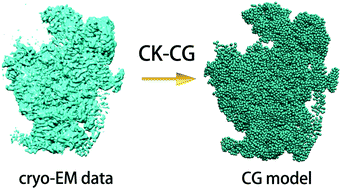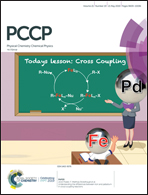A new method for the construction of coarse-grained models of large biomolecules from low-resolution cryo-electron microscopy data†
Abstract
The rapid development of cryo-electron microscopy (cryo-EM) has led to the generation of significant low-resolution electron density data of biomolecules. However, the atomistic details of huge biomolecules usually cannot be obtained because it is very difficult to construct all-atom models for MD simulations. Thus, it is still a challenge to make use of the rich low-resolution cryo-EM data for computer simulation and functional study. In this study, we proposed a new method called Convolutional and K-means Coarse-Graining (CK-CG) for the efficient coarse-graining of large biological systems. Using the CK-CG method, we could directly map the cryo-EM data into coarse-grained (CG) beads. Furthermore, the CG beads were parameterized with an empirical harmonic potential to construct a new CG model. We subjected the CK-CG models of the fibrillar protein assemblies F-actin and collagen to external forces in pulling dynamic simulations to assess their mechanical response. The agreement between the estimated tensile stiffness between CG models and experiments demonstrates the validity of the CK-CG method. Thus, our method provides a practical strategy for the direct construction of a structural model from low-resolution data for biological function studies.

- This article is part of the themed collection: 2019 PCCP HOT Articles


 Please wait while we load your content...
Please wait while we load your content...